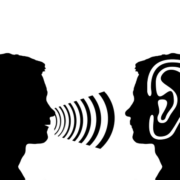How to Deal With Angry Customers
Something that’s happened to us all – the case of the angry customer!
Wherever we work, whatever we do, we’ll all eventually find ourselves face-to-face in that awkward situation in the workplace we’d rather simply avoid. Let’s face it – people get angry all the time.
In my younger days when I first started out as a Holiday rep across sun-filled European resorts, although sales were always a strong part of the role, customer service and problem-solving were areas in which I learnt the quickest. Holidays are meant to make you feel good. Ironically, they can also bring out the worst in people. Angry finger-pointing holidaymakers shouting and yelling, delayed airport passengers holding you personally responsible for their overnight 12-hour delay and in-your-face fathers ready to explode with fury. Thrown in at the deep end, this became my first “training ground” in handling tense situations and the first steps to developing strong customer service skills.
Customers or clients become rude or angry for a number of reasons – some perfectly justified, and others completely the opposite. Keeping customers on our side is often easier said than done and demonstrating those valuable soft skills to diffuse heated situations can really make a difference.
How you respond can really be the difference between a customer who feels satisfied with the result and one who will tarnish your business and spread unwelcomed negativity. Knowing how to handle the heat is a skill worth learning.
Taken from my workshop “How to Deal with Irate Customers”, I’d like to share with you a few takeaways to help you feel more confident in dealing with customers who are heading for boiling point and understanding how to diffuse potential customer-nightmares.
Table of Contents
Readjust Your Mindset & Focus
 The first piece of advice is crucial. As soon as you’ve been given signs the customer is upset or angry, the first things is to put yourself into a customer service mindset. Your goal is to take on board the issue and set aside any feelings you may have that your client is in the wrong, or you’ve been unfairly critisized or even a personal attack. Focus on the fact that your customer or client is upset, and acknowledge you’re the one to resolve the problem. Get into a frame of mind that entirely focuses on your client, and to the present situation. This will help you remember not to take it personally. It’s easy to forget when you’re in the firing line but the customer is actually not angry with you. They’re unhappy with the performance of your product or the quality of the service your company provides. Although it often seems personal, usually it isn’t.
The first piece of advice is crucial. As soon as you’ve been given signs the customer is upset or angry, the first things is to put yourself into a customer service mindset. Your goal is to take on board the issue and set aside any feelings you may have that your client is in the wrong, or you’ve been unfairly critisized or even a personal attack. Focus on the fact that your customer or client is upset, and acknowledge you’re the one to resolve the problem. Get into a frame of mind that entirely focuses on your client, and to the present situation. This will help you remember not to take it personally. It’s easy to forget when you’re in the firing line but the customer is actually not angry with you. They’re unhappy with the performance of your product or the quality of the service your company provides. Although it often seems personal, usually it isn’t.
Keep Calm
Easy to say, harder to do. One thing which I learnt very quickly was that you’ll never win an argument with a customer. Responding in a similar manner to a yelling customer who is simply making your blood boil with accomplish nothing positive. In fact, it will only ignite the conversation and may even escalate into something more hostile. Self-control is a beautiful skill – in this type of case this will help to diffuse the situation. Remember, no matter what, don’t be driven towards the same anxiety levels as your customer as this will take things to a far darker place.
Put Your Listening Skills into Action
 An angry customer wants to vent his feelings and air his grievances. He needs someone to listen. You need to patiently listen to why your customer is upset. This can start the process in diffusing the situation and makes the customer feel acknowledged in his complaint. Start by asking a question which completely puts the ball in their court and proves you’re ready to hear them out, such as “Let’s go through exactly what happened,” or “Please tell me everything – I’d like to know why you’re upset.” This is a subtle way to form a partnership between you and your client, and shows you’re focused on the getting to the bottom of things. Try not to solve the situation right away or jump to conclusions. Let your client tell you his story. Hold back from interrupting and as this gives your client your full attention.
An angry customer wants to vent his feelings and air his grievances. He needs someone to listen. You need to patiently listen to why your customer is upset. This can start the process in diffusing the situation and makes the customer feel acknowledged in his complaint. Start by asking a question which completely puts the ball in their court and proves you’re ready to hear them out, such as “Let’s go through exactly what happened,” or “Please tell me everything – I’d like to know why you’re upset.” This is a subtle way to form a partnership between you and your client, and shows you’re focused on the getting to the bottom of things. Try not to solve the situation right away or jump to conclusions. Let your client tell you his story. Hold back from interrupting and as this gives your client your full attention.
Actively Empathize
After the customer has vented his anger and told his story, he then wants to know you fully understand his point, his concerns and how he feels. This is where you show you’ve understood why the customer is upset. There are many ways to verbally do this, such as “I understand why you’re upset. I would be too” or “You’re right to feel upset. This shouldn’t have happened”. Respect and understanding, expressing empathy for their negative customer experience really does go a long way toward smoothing things over.
So, here are just a few tips and ideas to remember the next time you’re faced with a tricky situation at work. It’s never easy, but if we know what to say and perhaps more importantly, how to say it, we can start to puts things right, regain the customer loyalty and surprisingly, often end up with a better relationship with our client than we had before.
Does your company team need to refresh their techniques when dealing with tricky customer situations? Do you need some valuable insights into dealing with angry customers? Get in touch to arrange a visit to your company sharing the “How to Deal with Irate Customers” workshop full of practical advice, proven techniques and useful customer service phrases.
About the Author

Peter Hopwood is a copywriter, workplace communications trainer and founder of Libris communications based in Eastern Europe. He focuses on helping professionals to make a stronger impact with their personal communication via customer service training, copywriting, public speaking and presentation skills.



